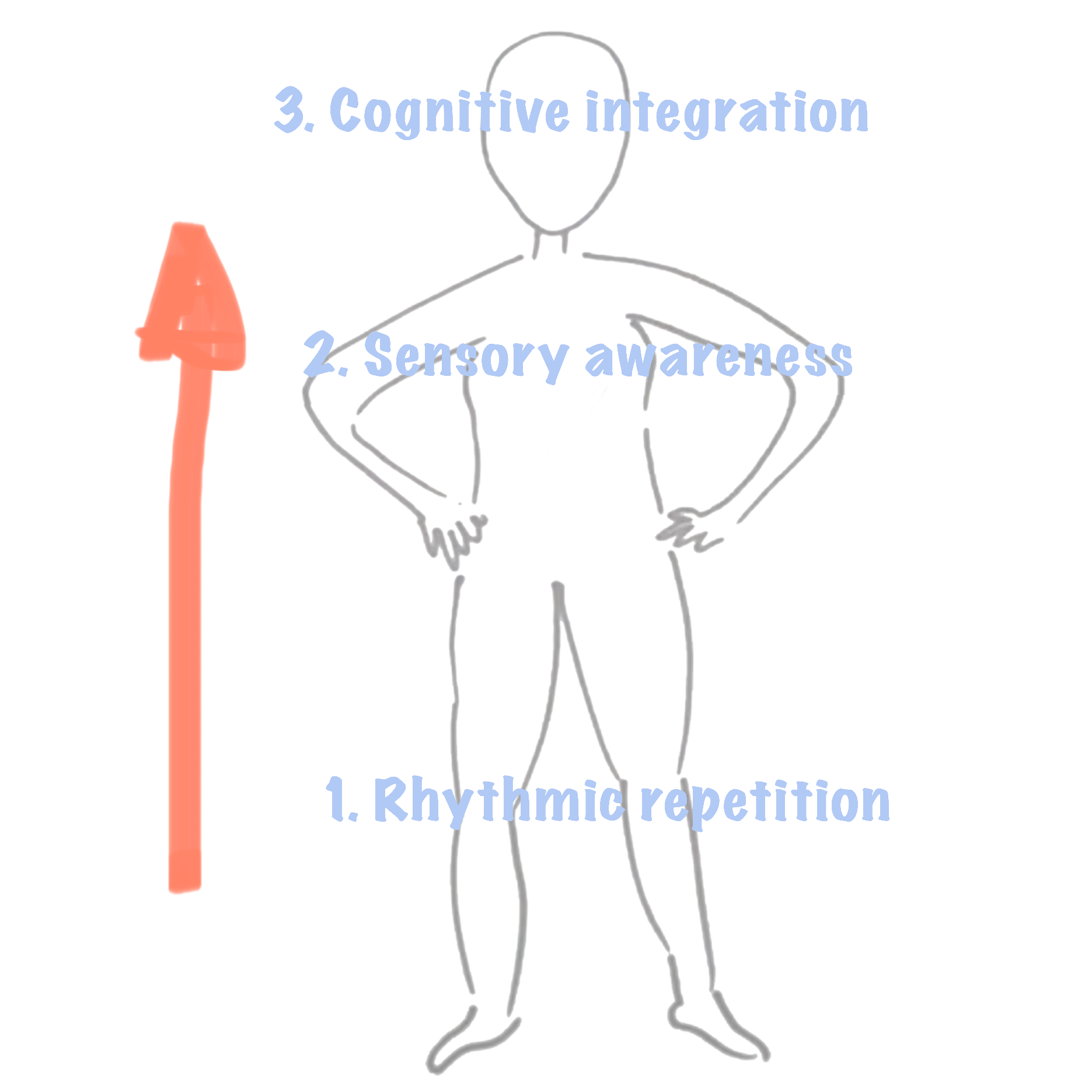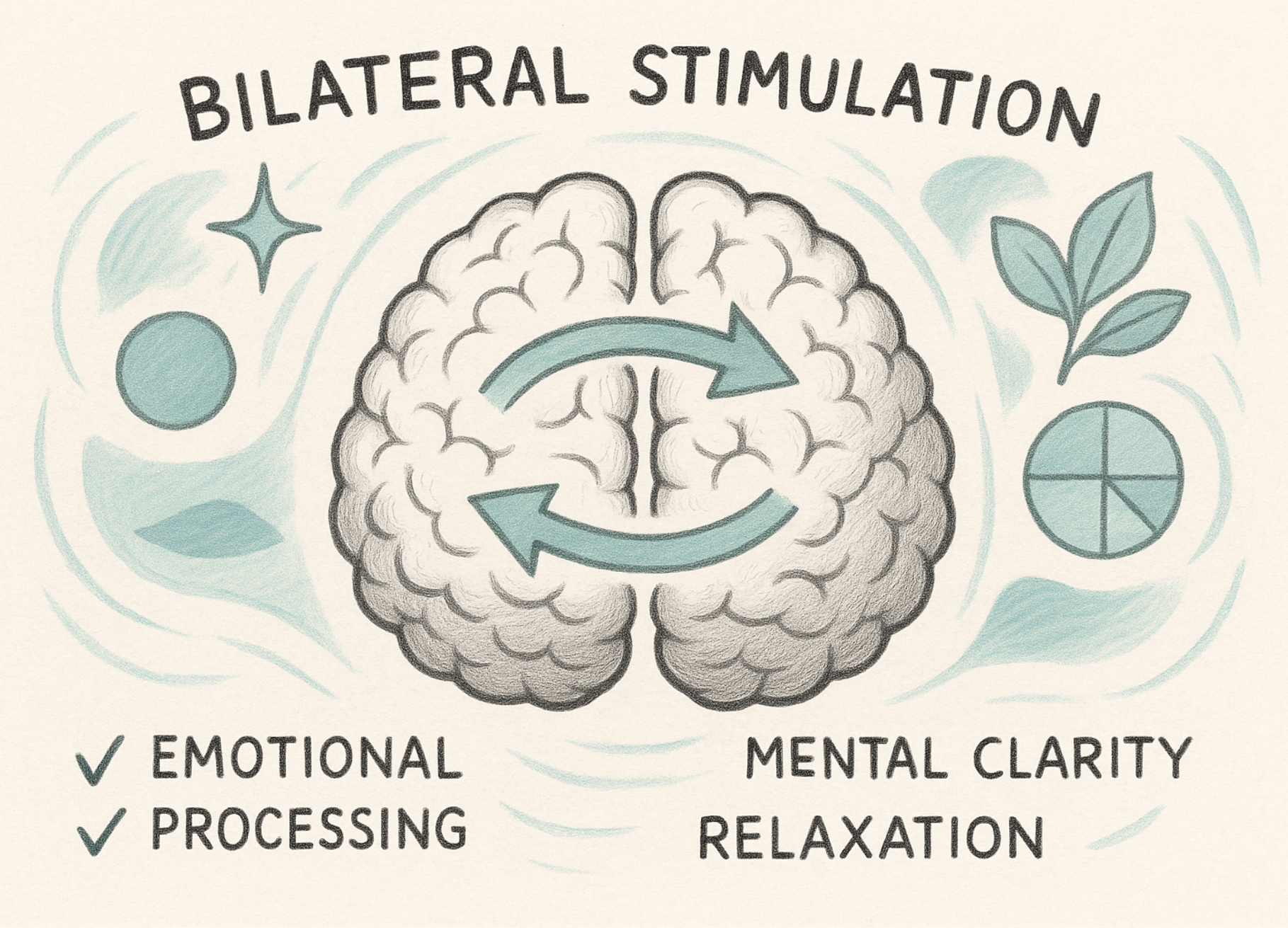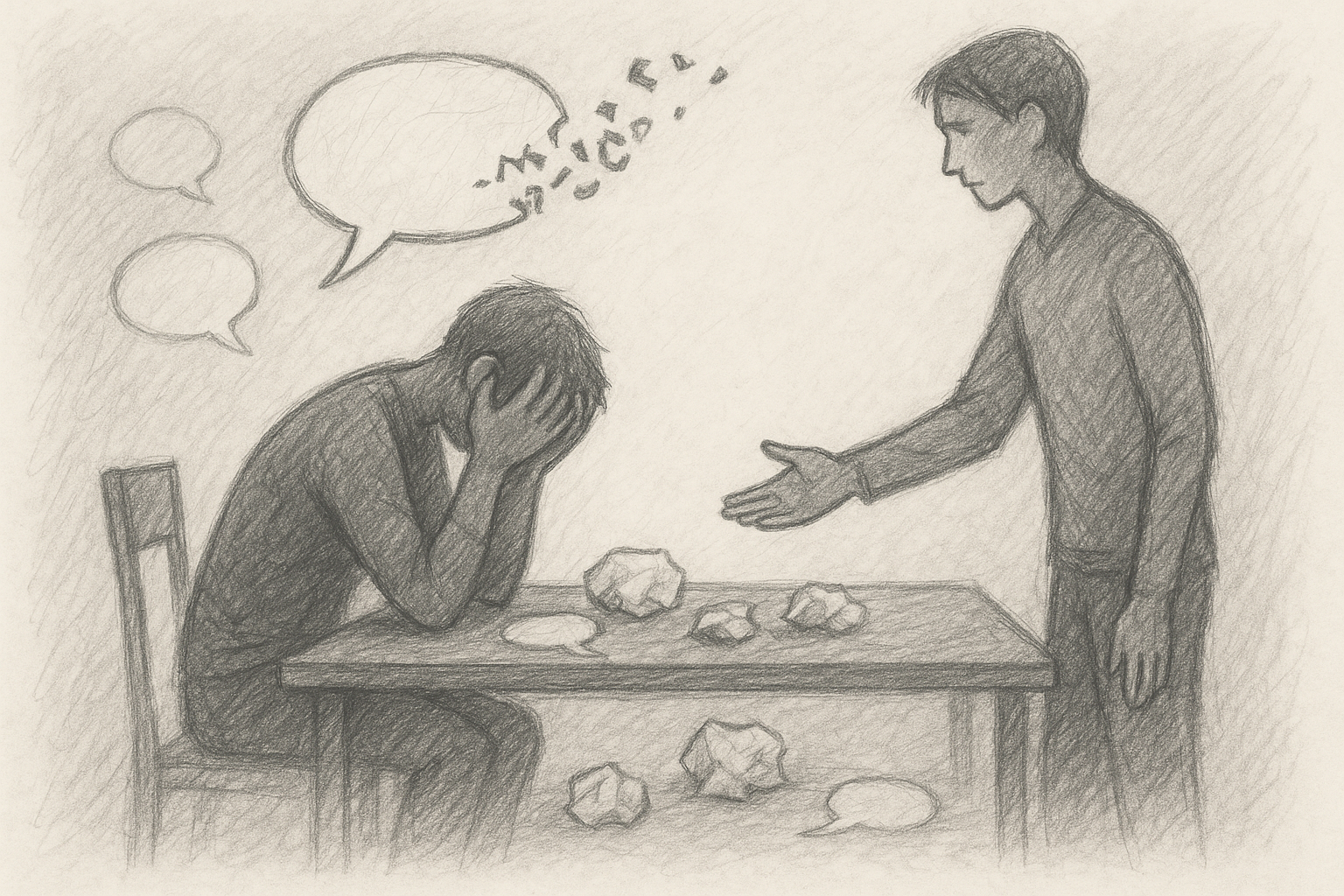
The bottom-up approach to art therapy refers to a therapeutic framework that focuses on addressing the body’s sensory and emotional experiences first, rather than starting with cognitive processes like reasoning or verbal expression. This approach is grounded in neuroscience and is particularly useful for individuals who have experienced trauma or struggle to articulate their emotions verbally.
1. What Does “Bottom-Up” Mean?
- The term “bottom-up” comes from neuroscience and refers to how the brain processes information:
- Bottom-up processing starts with sensory input (what we see, feel, hear, etc.) and works its way up to higher-order cognitive functions like reasoning and decision-making (managed by the prefrontal cortex).
- This contrasts with top-down approaches, which focus on higher-order cognitive processes (e.g., logical thinking, self-reflection) and then work down to emotions and bodily sensations.
In art therapy, the bottom-up approach emphasizes the body, senses, and emotions as the entry point for healing rather than starting with talking or analyzing thoughts.
2. How Does It Work in Art Therapy?
The bottom-up approach in art therapy engages the **body and senses** through creative activities, allowing people to process emotions and experiences in a non-verbal, experiential way. Here’s how it works:
a) Sensory Engagement
- Art therapy activities like painting, drawing, sculpting, or collage involve the use of sensory systems (e.g., touch, sight, movement).
- This sensory engagement can help regulate the nervous system, particularly in individuals who feel overwhelmed or “stuck.”
b) Accessing Implicit Memories
- Trauma and intense emotions are often stored in the body and non-verbal parts of the brain (e.g., the limbic system).
- Through art-making, individuals can express and release emotions or memories that they may not be able to articulate with words.
c) Emotional Regulation
- Art therapy provides a safe outlet for emotions, allowing individuals to process feelings like anger, fear, or sadness in a controlled, creative way.
- The repetitive and rhythmic actions of art-making, like doodling or brush strokes, can also activate the **parasympathetic nervous system**, which promotes relaxation and reduces stress.
3. Why Use a Bottom-Up Approach in Art Therapy?
This approach is particularly beneficial for individuals who:
- Have experienced trauma or adverse experiences.
- Struggle with verbal communication or find it difficult to talk about their emotions.
- Feel overwhelmed by cognitive-based therapies that require in-depth analysis or reflection.
- Need to first regulate their nervous system before engaging in deeper therapeutic work.
Key Benefits:
1. Trauma Healing:
Trauma often bypasses the cognitive brain and is stored in the emotional and sensory parts of the brain. Art therapy helps access and process these experiences without requiring verbal recall.
2. Nervous System Regulation:
Art-making can calm an overactive nervous system, helping individuals feel safe and grounded.
3. Non-Verbal Expression:
It allows emotions to be expressed visually or symbolically, bypassing the need for words.
4. Empowerment Through Creativity:
Creating art can give individuals a sense of control and accomplishment, which is particularly important for those who feel powerless or stuck.
4. Examples of Bottom-Up Art Therapy Techniques
Here are some activities that align with the bottom-up approach:
a) Grounding Exercises
- Encourage clients to focus on the tactile sensations of art materials (e.g., the texture of clay, the flow of paint).
- Example: “Draw a soothing pattern that feels calming to you, using your favorite colors.”
b) Non-Verbal Expression
- Let clients create abstract art to express emotions they cannot put into words.
- Example: “Use colors and shapes to show how you’re feeling right now.”
c) Sensory-Based Activities
- Use materials that stimulate the senses, such as finger painting, working with sand, or sculpting with clay.
- Example: “Focus on how the clay feels in your hands as you shape it into something meaningful.”
d) Body Mapping
- Clients trace an outline of their body and then use art to show where they feel sensations (e.g., tension, pain, or calmness).
- Example: “Color in the areas where you feel stress or relief.”
5. Bottom-Up vs. Top-Down in Art Therapy
Bottom-Up Approach:
- Starts with sensory and emotional input
- Focuses on regulating the body and nervous system
- Good for trauma, non-verbal clients, or emotional dysregulation
- Activities rely on sensory and creative expression
Top-Down Approach:
- Starts with cognitive and verbal input
- Focuses on analyzing thoughts and behaviors
- Good for clients who can articulate their emotions and reflect on them
- Activities rely on discussion, reflection, and analysis
6. Who Can Benefit from This Approach?
The bottom-up approach is particularly helpful for:
- Trauma survivors (e.g., PTSD, childhood trauma).
- Individuals with anxiety or depression.
- Children or individuals with developmental delays who struggle with verbal communication.
- People who feel disconnected from their emotions or bodies.
7. Why Art Therapy Is Ideal for Bottom-Up Healing
Art therapy naturally aligns with the bottom-up approach because:
- It is inherently sensory and experiential.
- It bypasses cognitive barriers, allowing for deeper emotional work.
- It promotes relaxation and grounding through creative engagement.
By focusing on the body and senses, the bottom-up approach helps individuals access and process emotions safely, paving the way for deeper healing and self-awareness.




Leave a Reply